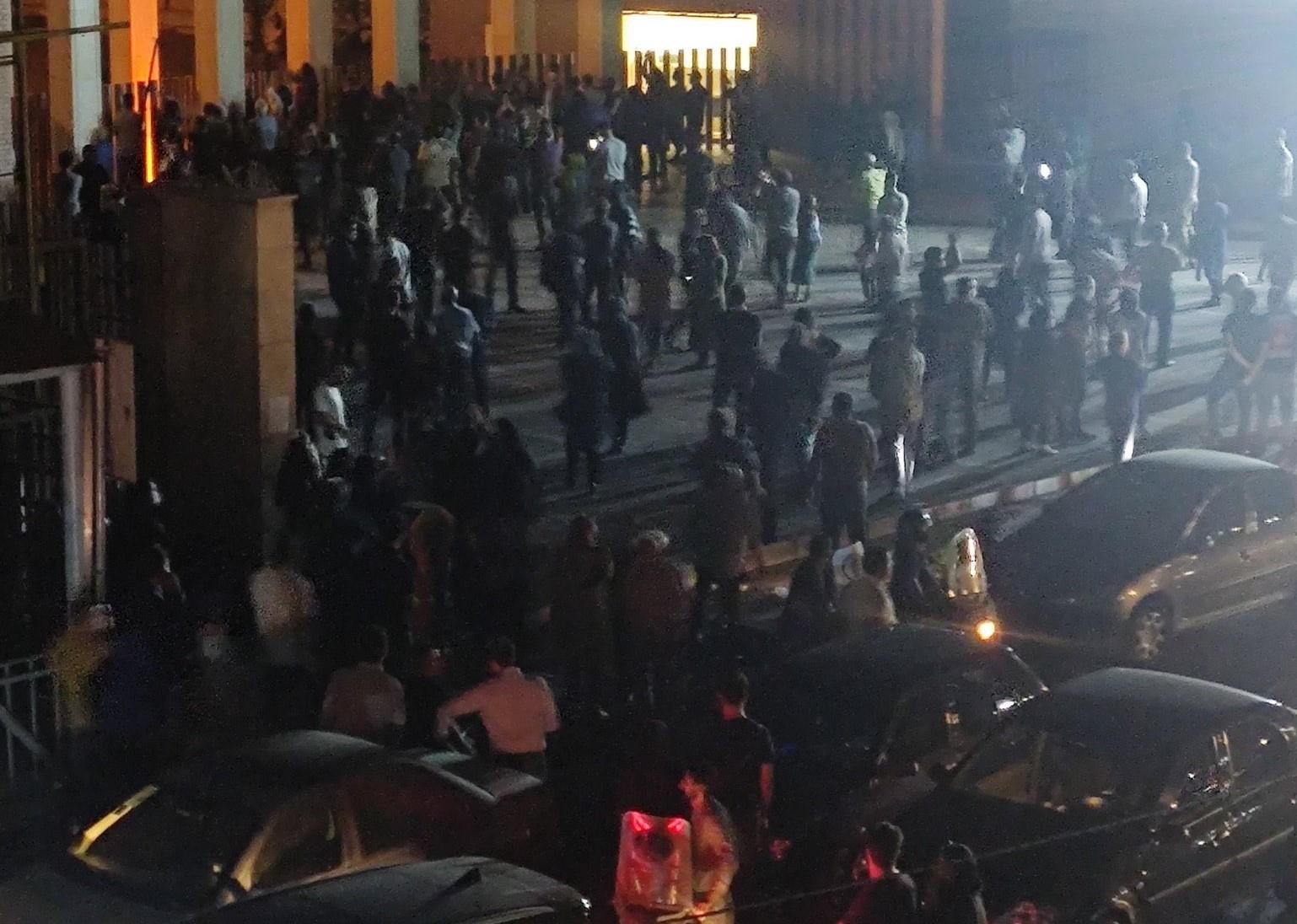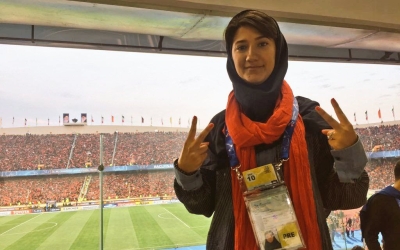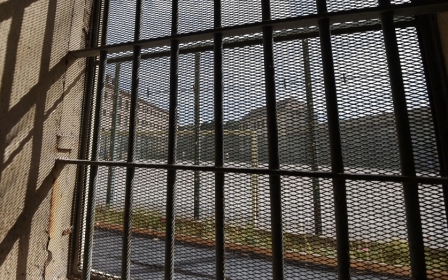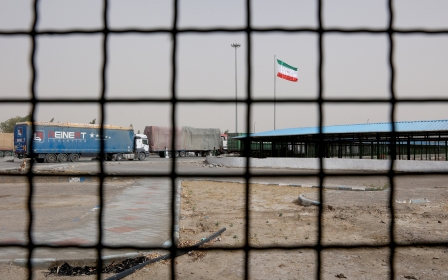Mahsa Amini: Iran's campuses become new battleground between police and protesters

In the latest move to suppress anti-government protests, Iranian authorities have deployed plainclothes police and paramilitary forces to attack students organising sit-ins and demonstrations on university campuses.
On Sunday, as the second day of a sit-in protest over the arrest of student activists continued on the Sharif University campus, police and members of the Islamic Revolutionary Guard Corps (IRGC) attacked the students and arrested the organisers of the sit-in.
Raids continued until the evening, while outside the campus the riot police surrounded the university and closed university entrances.
Campuses have turned into a new battleground between police and a movement of protesters angered at the death of 22-year-old Mahsa Amini after her arrest for "inappropriate hijab".
'It was like guard dogs being unleashed to tear students apart'
- Student activist
The Norway-based Iran Human Rights group reported that by 2 October, 133 people had been killed during the three-week protests.
New MEE newsletter: Jerusalem Dispatch
Sign up to get the latest insights and analysis on Israel-Palestine, alongside Turkey Unpacked and other MEE newsletters
A video posted on social media on Sunday showed the students in one of Sharif University's covered parking lots escaping, with police chasing them on motorbikes.
"This was a new level of brutality," a student who participated in Sunday's protests inside Sharif University told Middle East Eye,
"It was like guard dogs being unleashed to tear students apart. Security forces had no problem hitting students in the heads with batons, and from outside the campus, tear gas canisters were shot at us," the student explained.
Meanwhile, current and former student activists MEE spoke with stressed that Sunday night's violent attack on the campus of Sharif University would spur on further anti-government protests.
The activists said by entering the university campus, the riot police and the IRGC had crossed a line that would reopen the unhealed wounds from the brutal suppression of Iran's student movement in 1999.
According to law, the police and armed forces are not allowed to enter Iranian university campuses.
On 7 December 1953, the armed forces entered a campus in Iran and shot dead three Tehran University students who were demonstrating against then US Vice President Richard Nixon's visit to Iran in the wake of the coup that year.
After the 1979 Islamic revolution, plainclothes forces were deployed to attack students inside the campuses and dormitories.
However, Sharif University had never faced a major attack before Sunday night.
'A mark of disgrace'
The number of students arrested during the Sunday raid is unclear yet, but the non-governmental Sharif University Students' Islamic Association said that at least 30 students were arrested.
"Sunday was the day of blood in university … a mark of disgrace showing the regime's confrontation with university students," the Sharif University students' organisation wrote in a statement published on social media.
The organisation also urged university students and professors from all Iranian universities to join a national strike.
On Sunday, while the students were trapped inside Sharif University, Iran's minister of research and science, Mohammad Ali Zolfigol, visited the campus and spoke with the protesting students.
At the beginning of a video shared from this visit, Zolfigol is seen ordering the students: "Don't take any photo or video of this, and then share it with foreign [news] channels."
In a tense atmosphere, he continued: "The first issue related to what you do is that you're wasting public funds."
He warned students at the end, "Whoever breaks the law would pay its price."
Solidarity protests
Meanwhile, unconfirmed reports said demonstrations were held on Monday on several university campuses in Tehran and other major cities, including Babol, Mashhad, Tabriz, and Kerman, in solidarity with Sharif University students.
Protests and sit-ins broke out in Iranian universities on 1 October, when the academic year began in the country with a one-week delay.
This year the government postponed the beginning of the academic year in an attempt to prevent university students from joining the wave of demonstrations that swept across the country following the death of Mahsa Amini.
Amini, a 22-year-old woman from the Kurdish city of Saqqez, was arrested in Tehran for allegedly wearing an "inappropriate hijab", and a few hours later, she was transferred from the morality police custody to Kasra Hospital, where she died.
Despite the authorities' threats, the student movement immediately joined the protests, whose main slogan was "woman, life, freedom".
A veteran student activist, who participated in the 1999 student uprising in Iran, explained to MEE that the establishment has always been scared of unity between the student movement and other forces driving change in Iran.
"The university has always been one of the main sources of disobedience against the regime, and that's why the student movement was strongly suppressed in 1999," the activist said.
"Later, during the 2009 Green Movement, the leading forces of the social uprising were not inside the universities but on the streets, where ordinary people joined the movement. And now we see that these two forces are joining one another."
Middle East Eye delivers independent and unrivalled coverage and analysis of the Middle East, North Africa and beyond. To learn more about republishing this content and the associated fees, please fill out this form. More about MEE can be found here.





